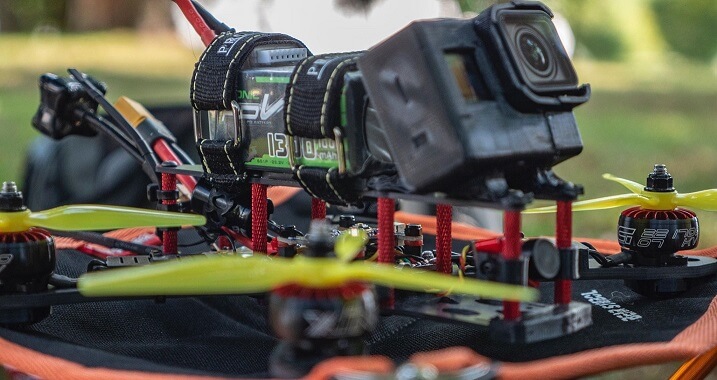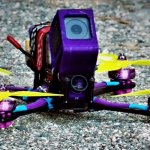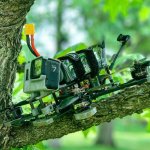For some people, they may like to listen to the sound of the FPV quadcopter motor during the flight because the sound will change with the RPM and throttle position. And for this situation, it makes the pilot feel more connected with the quadcopter. When the quad flies far away, using the microphone, you can still hear the sound of its motor, and even hear the lipo battery low warning sound from the buzzer! This allows the pilot to have a richer experience in flight with visual and auditory feelings.
However, some people do not like to add the sound, because when the aircraft is running well, those sounds are wonderful music, and when the equipment is not debugged well or the drone breaks into the noisy place, many annoying sounds will be heard in the ear. Or some people just want to concentrate on the visual enjoyment and don’t want to be distracted by the sound.
So how to get audio on a Quadcopter?
Most fpv transmitters have audio input for transmitting audio from the camera, but not all, just check it out. If you don’t have audio input, you can add it at any time, which is very cheap.
Specifically, there are several ways:
1. Get audio from FPV camera
Nowadays, there are more and more FPV cameras with built-in microphones, such as Runcam Swift 2 or Runcam Eagle 2 Pro.

Wiring is relatively simple, just connect the camera’s audio output to the audio input on the VTX. Please note that not all VTXs have audio input pins, with or without a microphone, so be wary of this when purchasing a new VTX.
2.VTX with a microphone
It is best to find and use a VTX with a microphone. The advantage of the built-in microphone VTX is that you don’t have to worry about wiring problems at all, it plug and play! Examples include Holybro Atlatl HV and AKK OBVTX.
Most vtx are mounted on the back or inside of the model, so it has better wind resistance than a cam with a microphone.
All most standalone vrx have video/audio (stereo) output, and most goggles have jack connectors for earplugs.

The hard part is getting the audio at the receiving end. Depending on the settings of the monitor or goggles, this can be easy or difficult.
Fatshark goggles and some box-shaped goggles output audio, but most low-cost goggles do not. To play audio from the RCA output, some kind of amplifier is needed.
TLDR; just make sure you have headphones on your goggles or monitor, and the rest is easy
All most standalone vrx have video/audio (stereo) output, and most goggles have jack connectors for earplugs.
The hard part is getting the audio at the receiving end. Depending on the settings of the monitor or goggles, this can be easy or difficult.
Fatshark goggles and some box-shaped goggles output audio, but most low-cost goggles do not. To play audio from the RCA output, some kind of amplifier is needed.
TLDR; just make sure you have headphones on your goggles or monitor, and the rest is easy
3.FPV external microphone
Although additional wiring is required, the audio quality is better than the inexpensive built-in microphone on a VTX or FPV camera. And it’s much cheaper than replacing a VTX or camera.

If you think the noise is too loud and there is no volume control on the earbuds, try adding a resistor to the audio signal (eg 220ohm – 330ohm).
When you fly fast, you will hear a lot of wind. If you find it too noisy, try covering the microphone with some foam.
To use these external microphones, you must use 12V to power them, then connect the signal cable (white) to the VTX audio input, and that’s it. Some VTXs may have two audio inputs (left and right channels) and it is recommended to connect to both channels.



